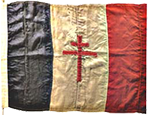C'est sûr que si on se réfère à Desert Storm, les Américains ont fouillé l'équivalent de la surface de l'Irlande (70 000km2 de désert) à la recherche d'un nombre indéterminé de lanceurs Scud, sans succès...
Je cite :
"Poor weather conditions and Iraqi deception techniques made it extremely difficult for coalition forces to detect and attack the dispersed TELs before they launched their missiles. Instead, air commanders focused on destroying the vehicles after they had launched
their Scuds. Toward this end, the coalition mounted combat air controls over so-called “kill boxes” where TELs were suspected. The
kill boxes were located in two areas—western Iraq near the Jordanian
border, where the Scuds were fired at Israel, and southern Iraq,
where they were aimed at Saudi Arabia. Air commanders hoped
that keeping aircraft on station over the kill boxes would allow F-15E
and F-16L strike aircraft to hit the TELs after they had launched their
weapons but before they had time to flee to safety. However, sensors aboard orbiting coalition aircraft, including LANTIRN and a
synthetic aperture radar, were unable to identify and acquire the
TELs, whose infrared and radar signatures were virtually indistinguishable from trucks and other electromagnetic “clutter” in the
Iraqi desert and were relatively easy to mask. The maddeningly
elusive nature of the Iraqi targets is illustrated dramatically by the
fact that on the 42 occasions during the war when orbiting strikers visually sighted mobile TELs, in only eight instances were they able to
acquire the targets sufficiently well to release ordnance."
J'ai un doute sur la phrase : "whose infrared and radar signatures were virtually indistinguishable from trucks and other electromagnetic “clutter” in the
Iraqi desert and were relatively easy to mask."
Est-ce qu'il parle de détection des départs missile, ou des lanceurs "inactifs".
PS : la source du texte :
https://www.rand.org/content/dam/rand/p ... 08.ch3.pdf











